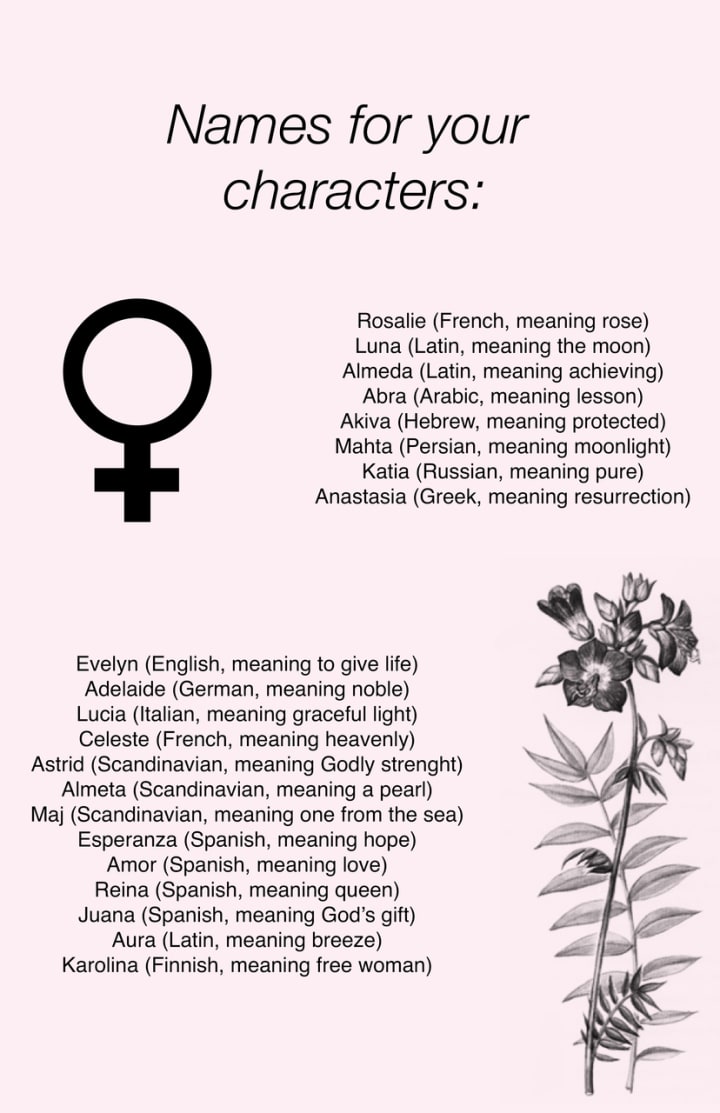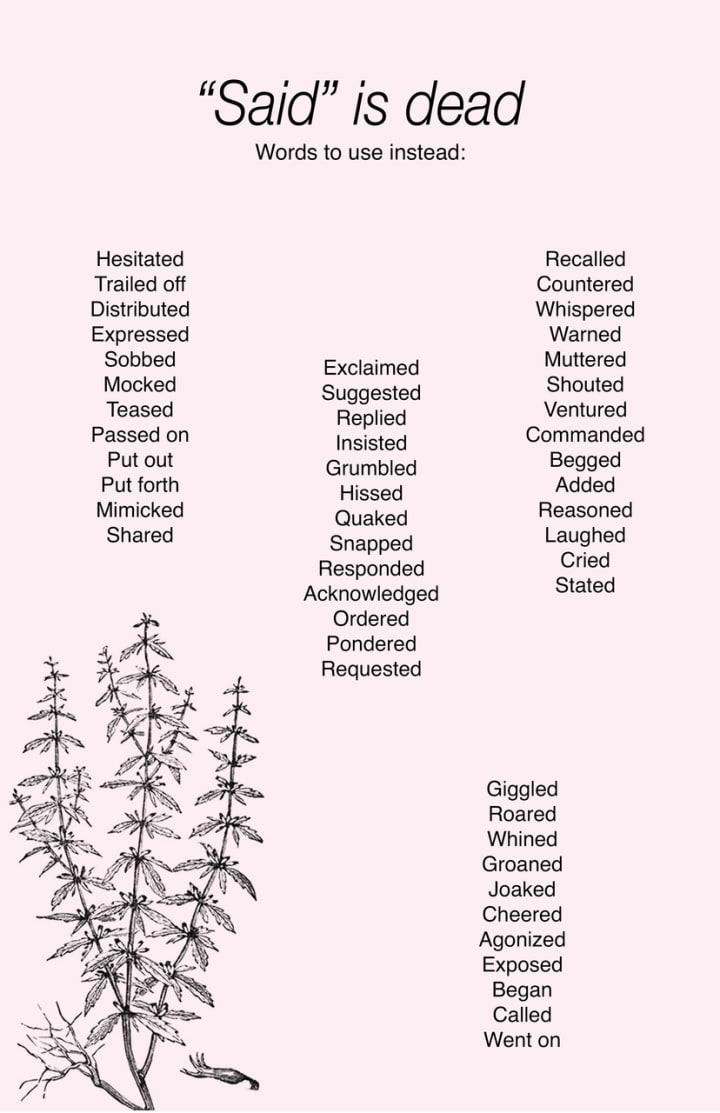Improve Your Writing and Editing With These Nine Steps
With the help of these nine steps, you can become a more successful writer in no time.

Writing can be hard. Yet, many of us wish to share our work, and inspire others with our words. With these nine steps, you will be on your way to improve your creative flow and writing style so that you can reach out to a wider audience, and hook your readers easily.
CREATING INTERESTING CHARACTERS
Step One: Creating Lives
When writing a creative story, you must create different characters your story will revolve around. It is very important that you, as the writer, know everything about your characters - especially when it comes to your main characters. Knowing their names and character traits are not enough. When you have created a main character, you should be able to...
- Draw a sketch of them.
- Write a mini-biography for them, including a brief backstory, age, location, and race.
- List their flaws, negative traits, and positive traits.
- Explain how they mourn and how they express their feelings.
- Tell what they hate and what they love.
- Answer these questions: How far would they go to protect their loved ones? Would they be able to forgive themselves after doing something horrible? What would completely break them? What is their happiest and saddest memories? What is the worst thing that could happen to them? What are they afraid of?
Imagine that you are about to write a Wikipedia page for your character. Do you know enough about them to do so? If not, try answering the questions above again.

Step Two: Naming Characters
Naming tens, hundreds and thousands of fictional characters go easy for some, but harder for others. You want the name of your characters to be special, but easy to remember. Down below are lists of names from all over the world you can use for your characters, as well as their meanings.



Step Three: Giving Character Flaws
Let's get one thing clear: Reading about perfect protagonists is usually extremely boring. Perfect main characters are exhausting to read about as we follow them, for they don't know defeat or problems. A flawless hero with a beautiful face, a perfect personality, and no motive but to save humankind will spark no interest, neither will a villain with an only-evil motive, no flaws, nor any issues. Do not be afraid to give your characters flaws!
A hero could be arrogant, and their behavior could be affected by traumas from their past. A villain could be messy. The nice mother-figure could be insecure, and the main character’s best friend could be extremely jealous and cruel.
Take Tyrion Lannister from George R.R. Martin’s A Song of Ice and Fire, which inspired the TV-show Game of Thrones as an example: Tyrion is extremely witty and strong, but he can’t seem to keep his mouth shut, making several people turn against him.
Harry Potter from J.K. Rowling’s books is incredibly brave and heroic, but also carry a lot of anger, and at times, show a great dose of arrogance, making people question his decisions.
Katniss Everdeen from The Hunger Games is fierce, observant and responsible, but she is also very stubborn and is not afraid to talk back, making us both like and dislike her character.
Emma Swan from Once Upon a Time is courageus, but she also tends to mistrust other people, which makes her story even more interesting than it already is.
Your readers do not neccessarily have to like your characters. Making readers question if they support a certain character or not, can be ten times more interesting than making them love them at all times.

WRITING THE STORY
Step Four: Show, Don't Tell
Formulations such as, “she was happy”, “he was sad” and “she was angry” will bore the reader; they won’t be able to understand the character they are reading about fully. Yes, the girl is angry, but how her anger be shown if your story was a movie? Would she clench her fists while her face turned red?
Instead of saying “she was happy”, tell us about how she was jumping up and down, laughing while clapping her hands. Instead of saying “he was sad”, write about how his eyes turned glossy, how his lips trembled, and how his shoulders dropped.
Instead of saying “she was angry”, explain how she stomped her foot into the ground while breathing heavily, her eyes narrowing. Instead of saying “he was tired”, tell us how loud he yawned and how big the bags under his eyes were. Instead of saying “she was nervous”, write in detail how her leg was bouncing, while she grew pale, feeling the butterflies in her stomach.
Once you start writing in detail, the readers will feel more for the characters, and your story will be much more exciting to read. Picture yourself in the situation the character is in and write about how you would be feeling at that moment.

Step Five: "Said" is Dead
There has long been a debate between writers whether it is positive or negative to use the word "said" in creative writing. The word can make your dialogue seem more boring and tasteless than what it actually is. Here are some words you can replace "said" with while writing dialouge.

Step Six: Take Your Time
A great problem when writing is finding the right words to use and how to make the story move forward. Sometimes, you get stuck trying to explain the character’s situation, and other times, you don’t know what you want the character to say. To get out of this trap, many beginner writers simply write the first thing that comes to their mind, instead of taking their time and imagining different outcomes. Next time this happens, think: "If I have to force it, I will leave it."
Don’t pressure yourself into writing something you have no idea how to write. Instead, try to take your time finding out what to write next to make the story move forward.
There are many ways you can get inspiration to move forward. Some writers find inspiration from their favorite authors, so picking up a book helps them. Others browse the internet, and some find inspiration through spending time alone. You must find out what works for you - because I promise you there will be many times where you will feel like you don’t know how to continue your story, and you will have to take your time getting rid of that mindset.
EDITING
Step Seven: Read it Out Loud
Writing is hard enough, but the editing process is just as hard, yet extremely important. Trough editing your own writing, you will learn more about your own style of writing and you will be able to fix your mistakes and rewrite the parts you are unhappy with.
There are several ways you can improve your editing, but the easiest one is to simply read your text out loud. If you find yourself stammering when reading, it is a clear sign that you should change something about the paragraph you are reading.

Step Eight: Change the Font
If you write your story with a computer, try changing the font when editing your story. The font Comic Sans is so different and unique from the standard fonts writers use, that you will find your mistakes easier than what you would have if you used, for example, Verdana or Times New Roman.
Step Nine: Wait
If you struggle with editing, try putting your work aside for a few hours or days. This will help you see your work afresh, and you will put yourself in your readers’ position. It will help you come up with new ideas, and keep you away from plot holes. Instead of editing your text right away the next time you write, try waiting at least five hours before editing – you will clearly notice the difference.

Remember that the fun part about writing is that there are no rules to it – you can do whatever you want when you write creative stories. I wish you good luck with your future writing and hope that this article helped you out!







Comments
There are no comments for this story
Be the first to respond and start the conversation.